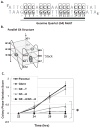Focusing homologous recombination: pilin antigenic variation in the pathogenic Neisseria
- PMID: 21812841
- PMCID: PMC3181079
- DOI: 10.1111/j.1365-2958.2011.07773.x
Focusing homologous recombination: pilin antigenic variation in the pathogenic Neisseria
Abstract
Some pathogenic microbes utilize homologous recombination to generate antigenic variability in targets of immune surveillance. These specialized systems rely on the cellular recombination machinery to catalyse dedicated, high-frequency reactions that provide extensive diversity in the genes encoding surface antigens. A description of the specific mechanisms that allow unusually high rates of recombination without deleterious effects on the genome in the well-characterized pilin antigenic variation systems of Neisseria gonorrhoeae and Neisseria meningitidis is presented. We will also draw parallels to selected bacterial and eukaryotic antigenic variation systems, and suggest the most pressing unanswered questions related to understanding these important processes.
© 2011 Blackwell Publishing Ltd.
Figures


References
-
- Bayliss CD. Determinants of phase variation rate and the fitness implications of differing rates for bacterial pathogens and commensals. FEMS Microbiol Rev. 2009;33:504–520. - PubMed
Publication types
MeSH terms
Substances
Grants and funding
LinkOut - more resources
Full Text Sources

